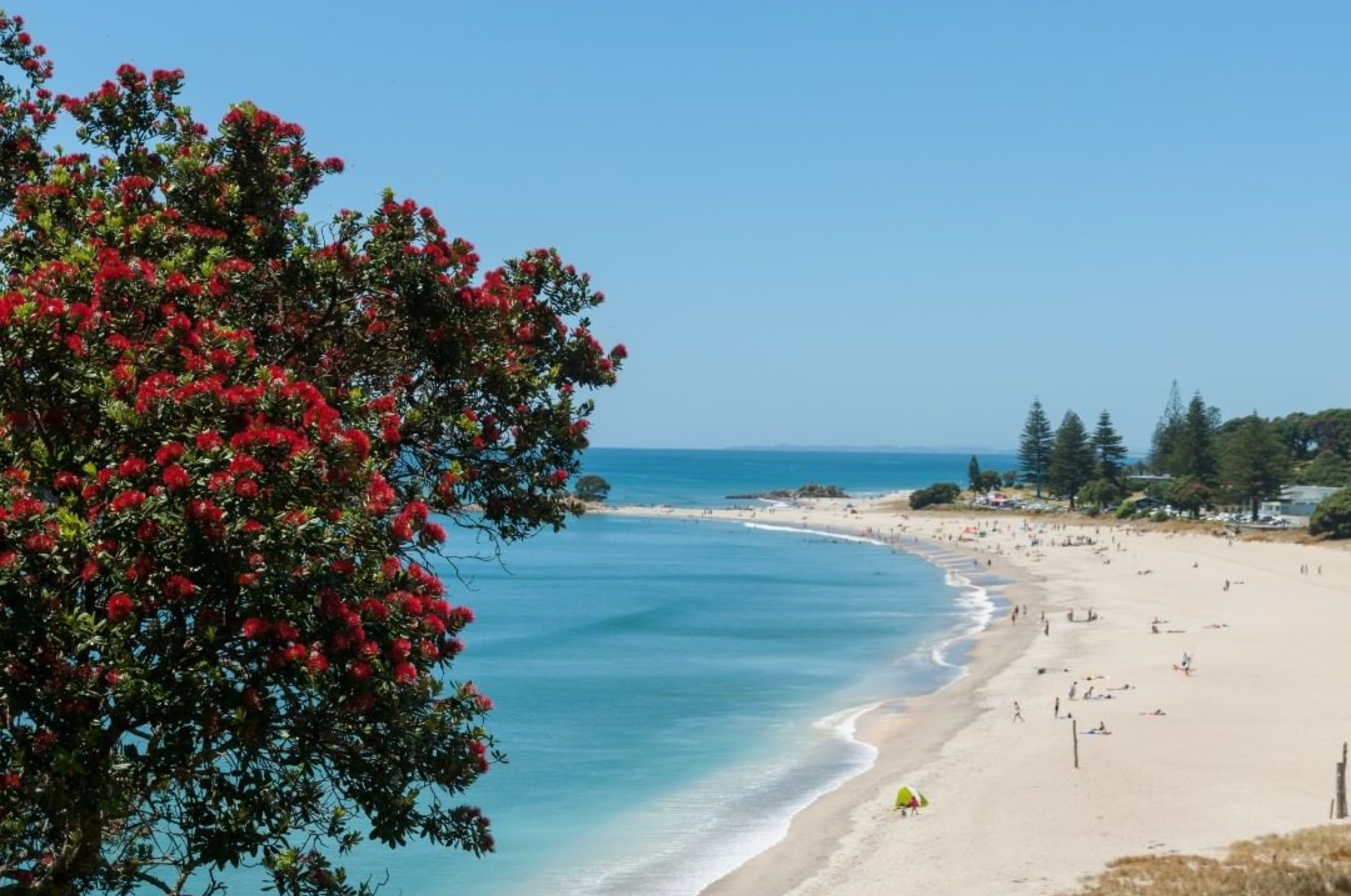Sensational summer — it’s the time of year to soak up long sunny days and invest in quality beach time. But even though plenty of fun is ahead, it’s still important to stay safe.
If you’re new to New Zealand or planning your first trip here, you’ll want to know how to stay safe while having fun driving, hiking, swimming or sunbathing. We cover all these topics and call out some local tips — so your summer holiday can be carefree and safe.
Staying safe under the New Zealand summer sun
Overseas visitors are usually surprised at how strong the summer sun feels in New Zealand, so it’s best to prepare well and protect yourself.
We now have greater knowledge about the damage the sun can do to our skin if we expose it without protection. The days of coming home from summer vacations with blistered and peeling skin are long gone.
Be particularly careful under New Zealand’s sun. It can be harsh year-round — though especially during summer due to:
- Less ozone in the atmosphere
- The closeness of the sun at this time of year
- The country’s relatively clear air.
If you're flying from the United Kingdom, America, Singapore or Australia, find out more about summer and the weather in New Zealand.
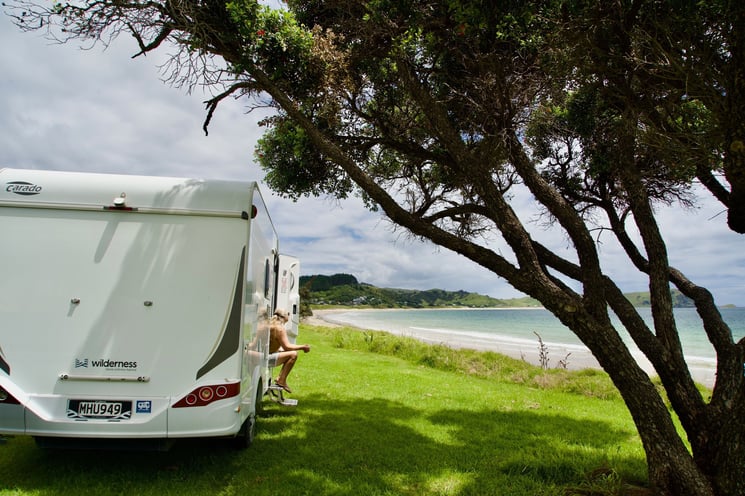
Applying sunscreen
Wearing sunscreen is essential, particularly between the months of September and April. Look for a quality water-resistant sunscreen with at least SPF 30. You can find sunscreen at most supermarkets and chemists (pharmacies).
Your sunscreen will need to be applied 20 minutes before you expose your body to the sun. Then, reapply it at least every two hours — or more frequently if you’ve been sweating or swimming.
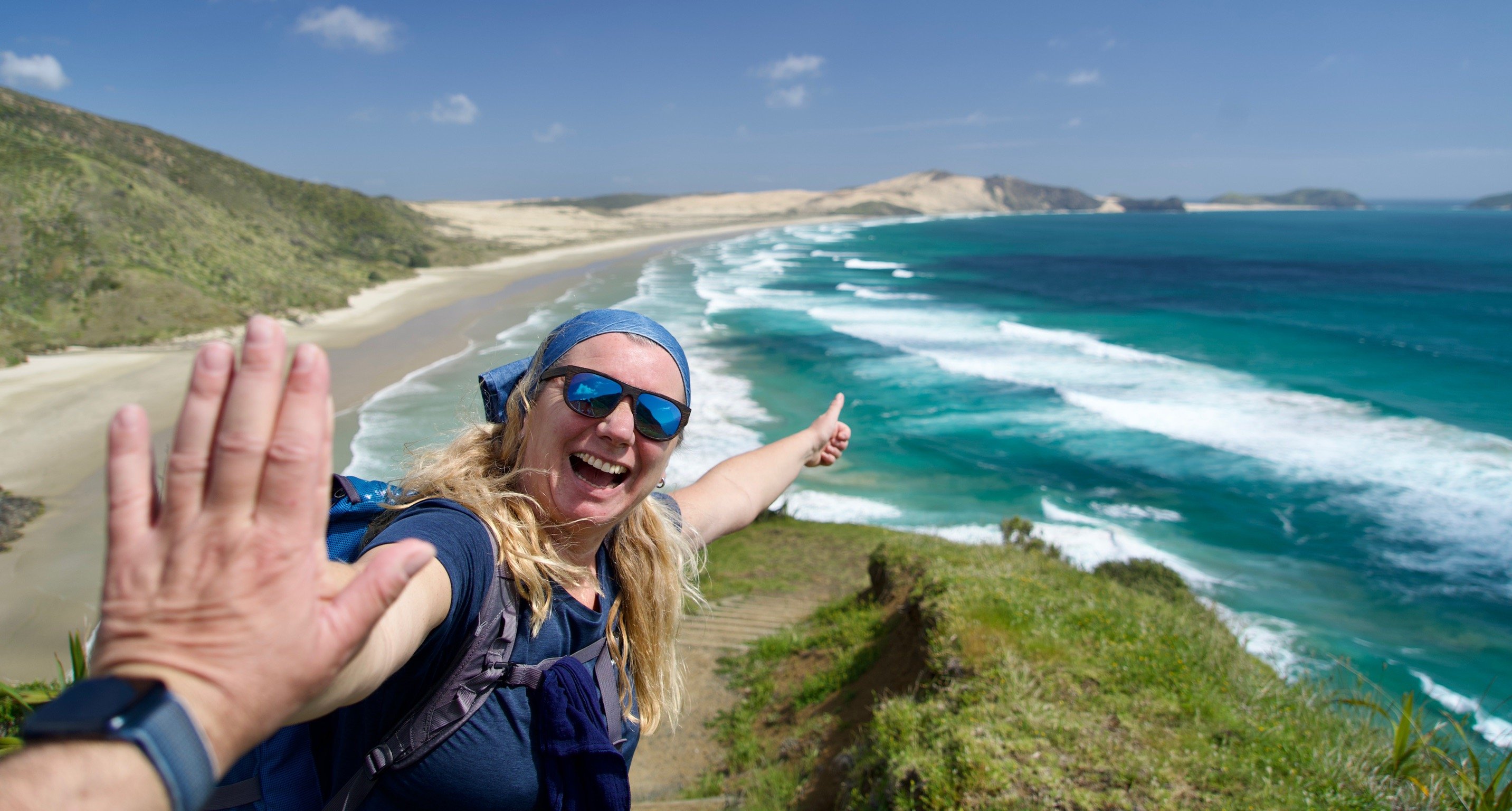
Wearing the right hat and sunglasses
Bring your best UV protection sunglasses on your holiday and ensure you have the right type of hat to prevent sunburn up top.
Your three best hat options for helping protect your head (including your ears and neck) are the:
- Bucket hat — ideally a deep crown bucket hat with at least a 6cm brim
- Wide-brimmed hat — with the brim being at least 7.5cm
- Legionnaire hat — with flaps covering your ears and neck.
Saying yes to shade
Shade is a key step to decreasing your risk of getting skin cancer and can be provided by buildings and trees. Keep shade in mind if you’re planning to spend a long day with sand between your toes, or dipping in and out of the water.
Covering up
Clothing is the most effective form of protection from the sun. So the easiest thing you can do to protect your skin while enjoying the New Zealand summer is to cover up.
If you have kids on board, introduce them to rashies. A rashie will cover most of your kid’s body while out swimming or playing in the sun.
Read our top ten reasons for touring New Zealand by campervan in summer.
Planning a safe summer in rivers, lakes and the sea
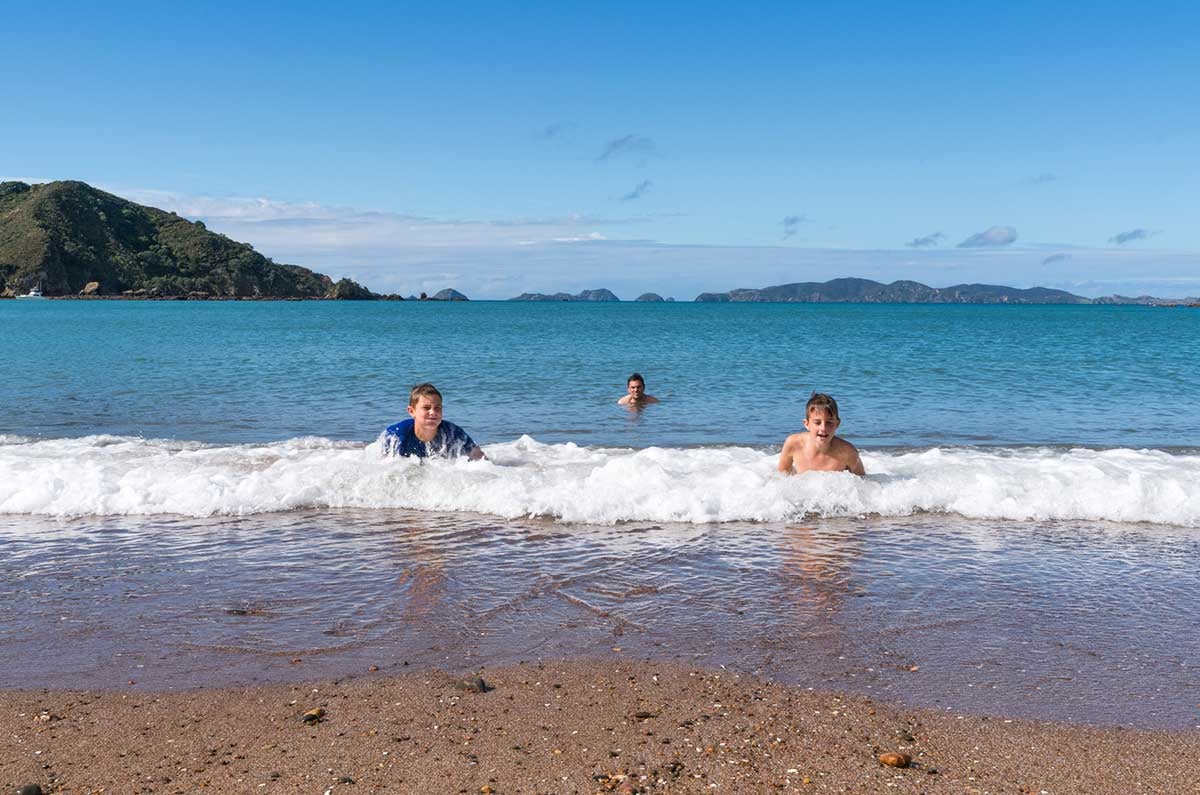
New Zealand has more than 17,000km of coastline which means you’ll be seriously spoilt for choice on your summer campervan hire. Pack the surfboard, snorkelling gear or just your togs (bathing suit) for your motorhome travels. You’ll be able to find a beach that suits your chosen sea activity.
Savouring the sea
At first sight, a beach might look ideal for swimming — but it may not be as swimmable as it seems.
Know what danger signs to look for depending on where the beach is located. New Zealand’s west coast beaches are arguably more dangerous than its east coast ones.
Ocean beaches are different to harbour beaches as they’re more exposed to open ocean currents. You’re less likely to have waves coming into a harbour beach, meaning danger signs like rips are less likely.
Rips
A rip current is a strong, narrow body of water that’s moving directly away from the beach and out to sea.
You often won’t know you’re caught in a rip until it’s too late so the best defence is to identify any from the beach before entering the sea. To spot a rip, look for:
- Calm stretches of water between waves
- Fewer breaking waves
- A rippled surface surrounded by smooth water
- Discoloured sandy water floating out beyond the waves.
Rips can show any number of these signs of danger — sometimes all of them, or maybe only one.
They can cause you to be pushed out into deeper water where you’re unable to stand up. Avoid trying to swim back into shore against the current as you’ll likely become exhausted. Instead, swim sideways from the current until you’re out of the rip and can swim calmly back to shore.
To be absolutely sure you won’t get caught in a rip, only swim between the red and yellow surf lifesaving flags. Located on some popular beaches, they’re set up on sections of beach where the sea doesn’t have any rips. And if you do get in trouble, you’ll be spotted by a surf lifesaver on patrol.
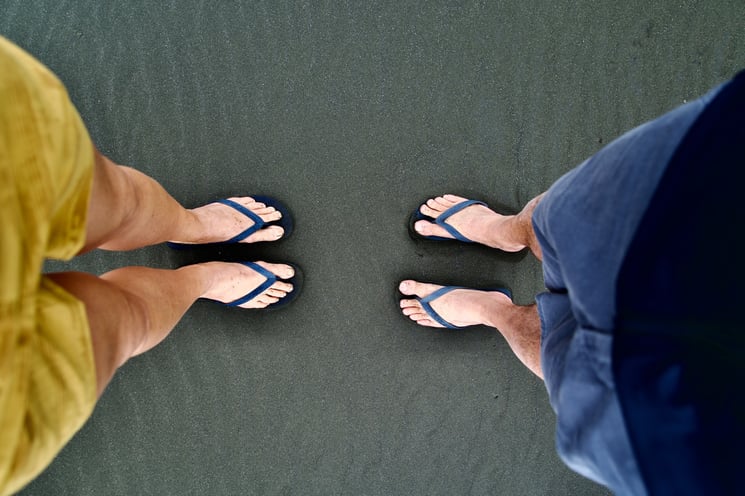
Black sand
Made up of eroded volcanic material, these spectacular beaches are also spectacularly hot in the summertime and should only be treaded while wearing footwear.
Surf
New Zealand has plenty of great surf beaches but it’s a smart move to talk to locals before taking on the waves. Some beaches may look like they’re ideal for surfing but there could be unknown dangers like:
- Hidden rocks — can be hard to see under breaking waves, especially near rocky headlands
- Strong offshore winds — that can cause your board to lift up and blow back into your face
- Rip currents — useful for paddling out from shore if you’re an experienced surfer but hazardous if you’re fairly new to the sport.
If you’re considering breaking a few waves on an unknown beach, it's best to chat with the locals about whether it’s safe to surf.
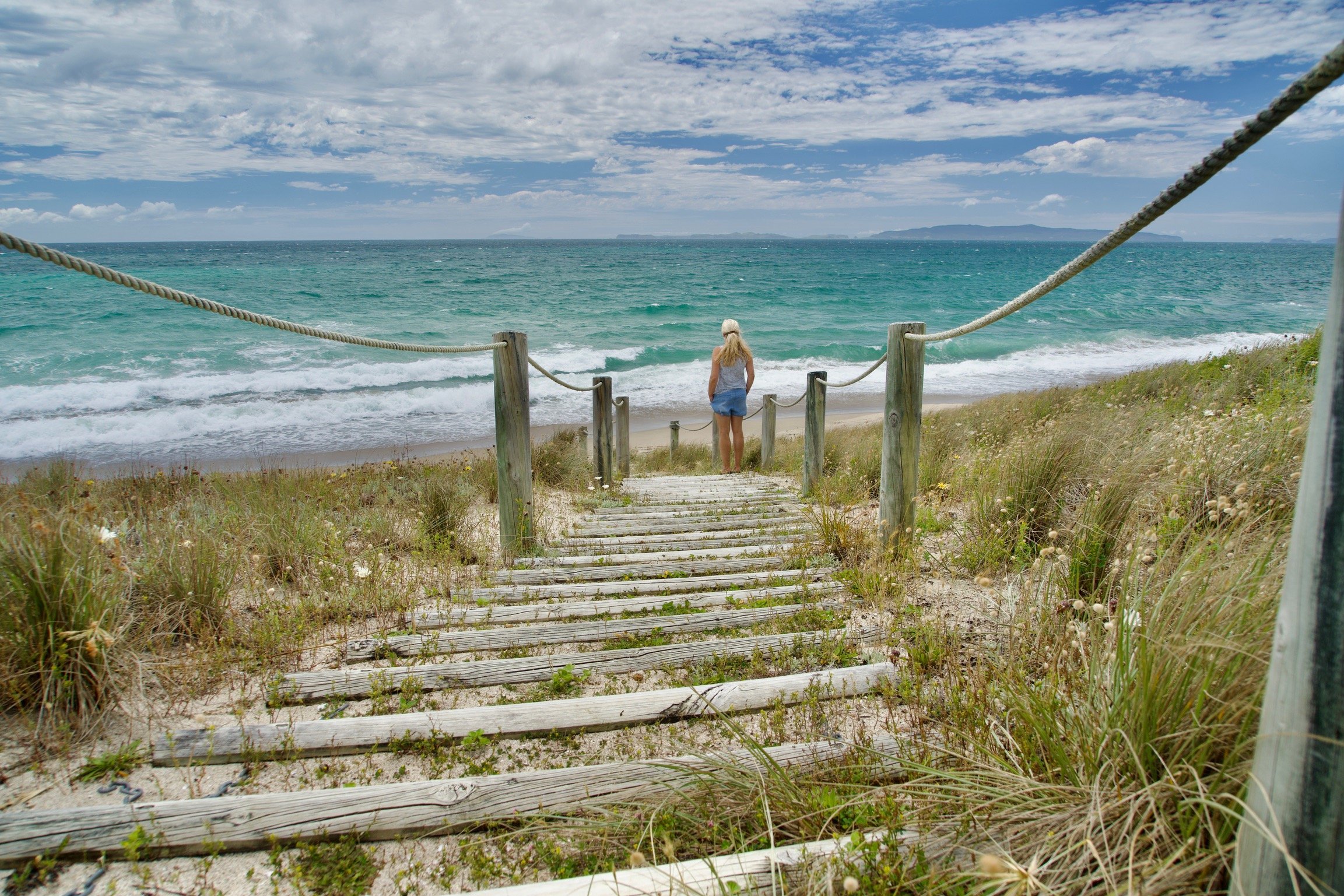
Rocks
Exploring rocky areas can become a danger when the tide is coming in and waves are surging over them. Rogue waves are always possible. Plan to arrive at your beach destination as the tide is on its way out and your time exploring the rocks will be safer.
Relishing the lake
New Zealand is renowned for its incredibly pristine lakes — often set amongst mountains and spectacular scenery.
Lake swimming is great for relaxation, improving blood circulation and increasing your lung capacity. New Zealand lakes are safe to swim in for the most part but always look for signs of poor quality water like:
- Contamination — which can potentially come from bird flocks, storm water drains or wastewater outlets
- Algae — avoid potentially toxic algae blooms
- Heavy rain — it’s best not to swim after two or three days of prolonged rain
- Murkiness — foul smells or murky water are valid reasons not to swim.
You can check the water quality for swimming at lakes around the country on the Land Air Water Aotearoa (LAWA) site.
Revelling in the river
River swimming can be a heap of fun but also comes with its obvious cautions. New Zealand rivers can rise extremely fast, especially in the mountains.
When conditions for river swimming are favourable look for safe swimming holes, or better still, ask the locals where the best spots are. Good swimming spots have:
- An easy place to get in and out
- A relatively weak current
- Nothing floating downstream like driftwood
- Clear, unpolluted water where you can see the bottom.
Our best campervan park up spots guide features a few locations near rivers.
Eating safe food over the fun summer months
The classic Kiwi summer is full of outdoor socialising, entertaining and cooking the New Zealand way. Sausages or steak are on the barbecue and seafood including shellfish is on the menu.
Food may end up being out of your motorhome fridge (or outdoor chilly bin) for longer than usual. So while preparing alfresco food in New Zealand’s humid summer conditions:
- Practise clean hand hygiene
- Prepare raw food and handle cooked food with different utensils and in separate spaces
- Cook meat and seafood thoroughly.
Common sense will ensure you stay away from any foodborne nasties on your summer roadie.
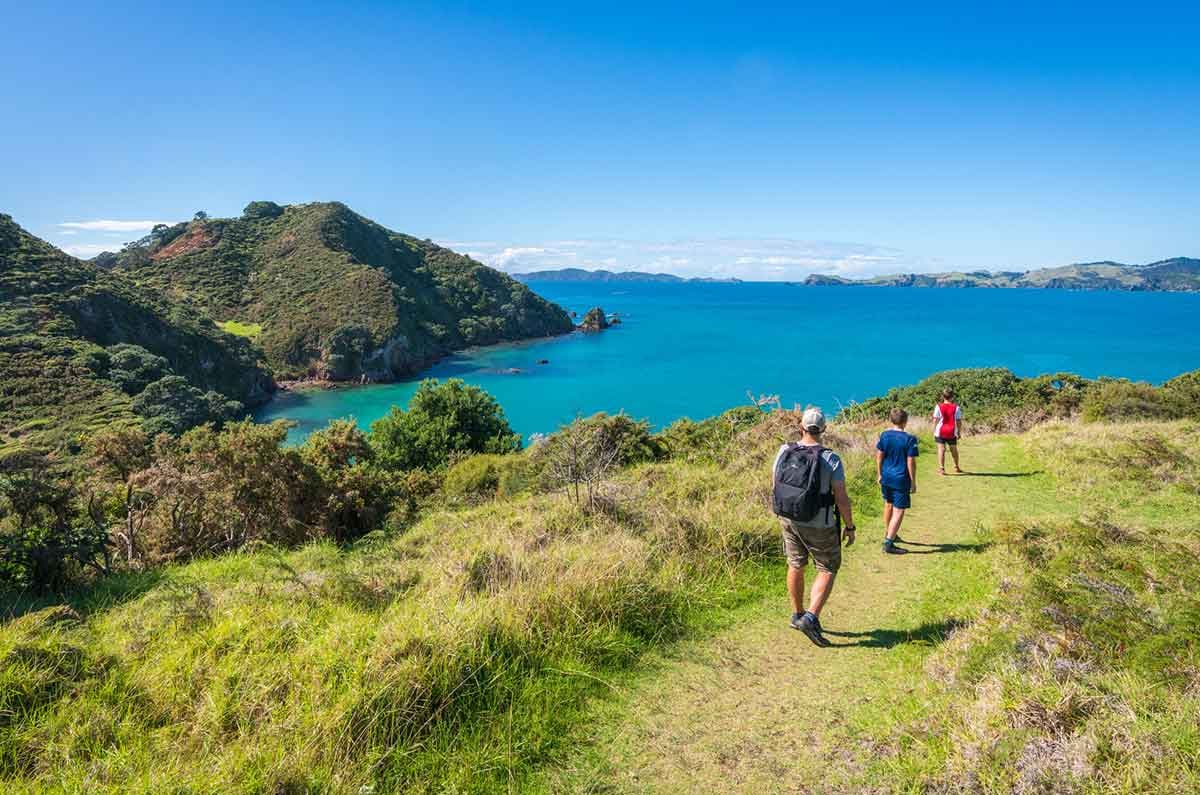
Hiking safe in the New Zealand bush
Wherever you decide to travel in New Zealand by motorhome, you won’t be far from a bush walk. It’s part of the culture here.
Planning a few short walks into the wilderness? Some important preparation for keeping you and your group safe in the New Zealand bush includes:
- Being ready for four seasons in one day — the weather can change quickly on these shaky isles so pack rainwear, a warm layer and a wide-brimmed hat
- Carrying a daypack with everything you may need — insect repellent, sunscreen, any medication and your fully-charged phone
- Packing enough food and water to last the day and even overnight, in case you run into trouble.
Read up on New Zealand's hiking etiquette to get the best out of your hiking experience, then check out the country's best hikes and walks on a motorhome holiday.
Tips for driving safe on New Zealand roads in summer
Summer is the time of year when people are out and about — roads are busy with plenty of traffic, and people tend to get impatient. Knowing how to drive safely on Kiwi roads in summer is essential.
For comprehensive detail on driving in New Zealand including planning tips and road trips, visit Drive Safe. Then, take on board these key tips to help keep you safe on our roads over summer.
- Keep left — seems straightforward but if you’re used to driving on the right, use a cue on your motorhome windscreen to help you stay left
- Be watchful of other road users — which could include sheep, cows, horses, cyclists, walkers and runners
- Slow down approaching one lane bridges — perhaps not so common in other countries, the safest way to cross them is to slow right down and prepare to stop
- Follow guided speeds — often found on approach into a corner where a sign will show the suggested speed to navigate the corner
- Expect longer travelling times — winding roads with greater vehicle numbers means that whatever Google says is the travel time will likely be longer.
Find out how easy it is to drive a motorhome and read our motorhome safety tips for beginners.
Recognising the right balance between having fun and staying safe over the New Zealand summer will ensure you’re well-refreshed and in great spirits come autumn.
|
Read our New Zealand driving guide Our comprehensive first timer’s guide to driving on New Zealand roads is a must-read if you’re not used to driving in this country.
|

